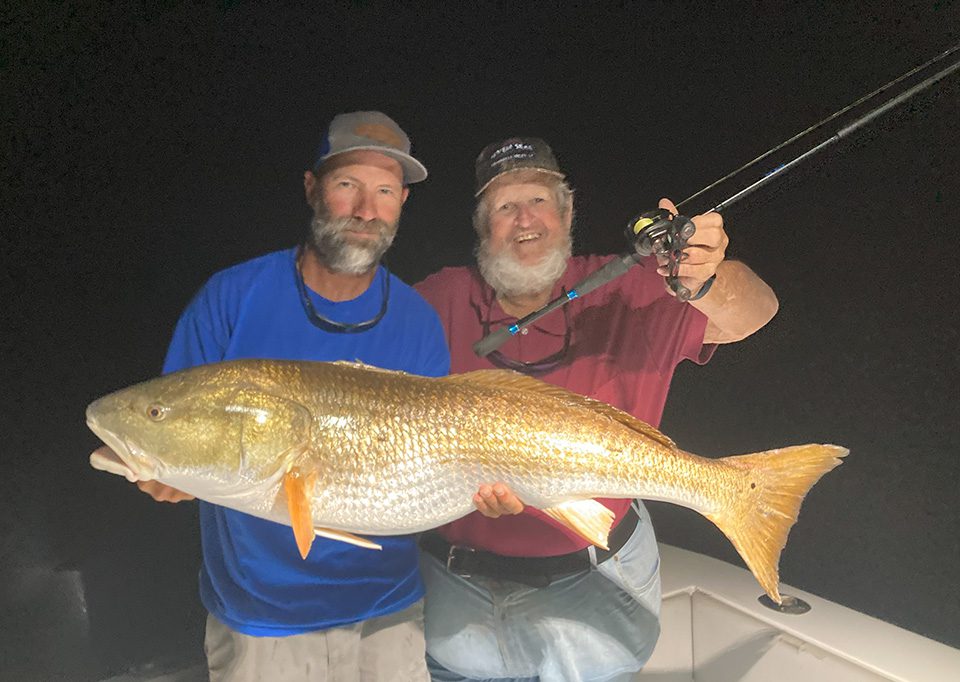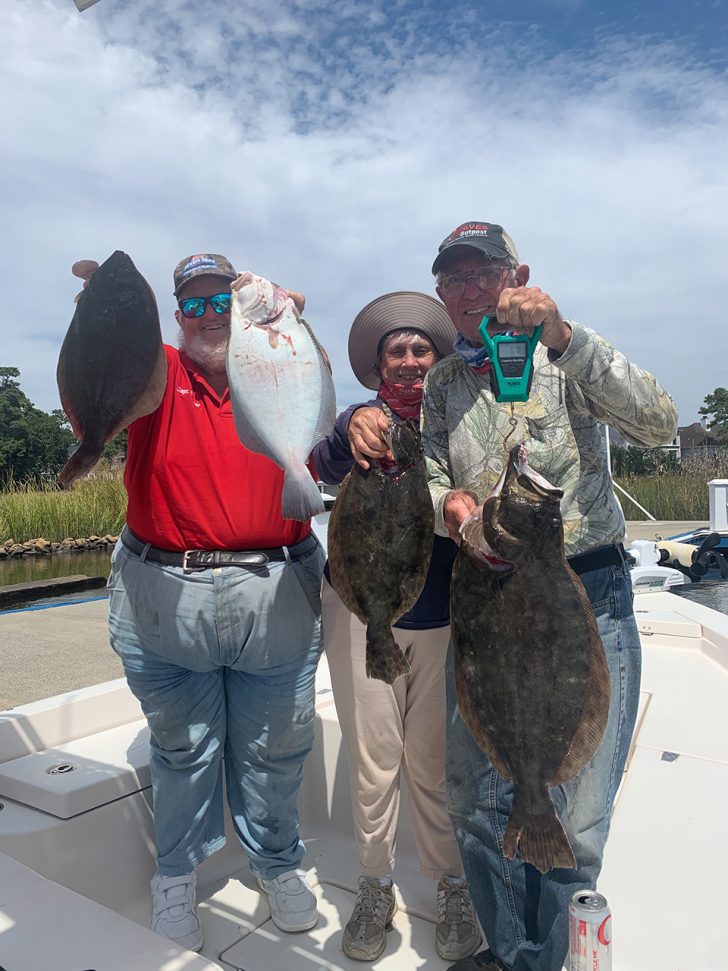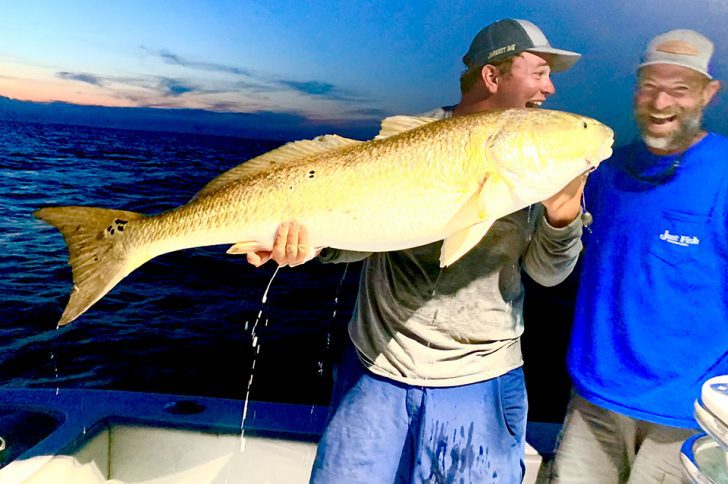The first week of September was a whirlwind of great fishing. Chris Conklin invited me over to Murrells Inlet in South Carolina for a few days of fishing. We headed 40 miles offshore on Tuesday with Captain Robert Strickland and Jiggy, and scored big with red snappers of all sizes, giant rose porgy and vermilion snapper. We caught a couple gag groupers and assorted other species.
We fished with Jimmy Dever from Murrells Inlet Fishing Center on Wednesday. At the jetties we caught a couple keeper sized flounder for lunch and released 7, over slot redfish, running about 8 to 12 pounds.
On Thursday I moved up to Little River, South Carolina. Here Gary and Linda Hall joined me in fishing with Captain Buddy Smith out of Cricket Cove. I got the ball rolling with a nice redfish caught sight fishing with a light spinning outfit and a rubber jig. Then we switched to our main goal, flounder. We caught our limit including a 8 pound monster that Gary caught on a live finger mullet.
Friday, I drove up to Morehead City, North Carolina. After the luxury of sleeping in for 2 days and great dinners with Ron and Maria Cook, Wiley Burg, and the legendary Jake Jordan, we went fishing Sunday afternoon and evening with Wiley. We started slow but set fire to the fishing as the sun set. We finished with 10 redfish from 20 inches to well over 50 inches. What a finish to an excellent week of fishing.
Now, about that October fishing. The fall migration should be fired up. Mullet, ballyhoo and all other kinds of bait should be moving south. These bait pods should herald all kinds of gamefish action. Inshore you should see plenty of assorted jacks, ladyfish, tarpon, snook, sharks, bluefish, the list goes on and on.
On the reefs, it will be migrating schools of mutton and yellowtail snappers. At the same time ballyhoo will be moving south on the surface. They will be identified by silvery showers of bait, diving pelicans, soaring frigate birds and rushing boats. You can join the fun by loading your live wells with ballyhoo, racing to the showering ballyhoo and pitching your live ballyhoo to bounding mahi and sailfish dorsal fins cutting the surface. The best rigging for this is 50 pound mono leader finished with a 6/0 light wire circle hook. Then secure a small bridle rubber band to the bend of the hook, by pulling one loop or the rubber band through the other loop of the rubber band while it is passing around the hook shank. Using a bridle needle, pull the rubber band up or down through the lower lip of a live ballyhoo and stretch the rubber band over the bill of the ballyhoo.
At the same time that you are catching 8 to 25 pound mahi and sailfish in ballyhoo schools in as shallow as 20 feet of water, the best mahi fishing season of the year is also taking place up to 15-20 miles offshore.
As long as you went so far offshore, you should drop for swordfish day and or night. October usually marks the beginning of migrating swordfish heralding several great months of action.
By the end of October, we might see the first schools of spanish mackerel showing up. But, if you can’t wait, then load up with pilchards and head for the outside of reefs from Government Cut south and take advantage of great cero mackerel fishing that peaks in October.
October means great fishing and weather, so get out there and join me. I’ll be there by the 15th!





